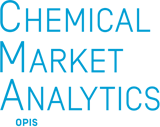Nitrile Rubber
Nitrile rubber, also known as nitrile butadiene rubber (NBR), has a wide range of applications, although automotive end-uses account for around 50% of global demand. NBR provides superior resistance to degradation from petroleum products such as gasoline, diesel oil, and other fuels. It is also noted for its high strength and excellent resistance to abrasion, water, alcohol, and heat. NBR’s disadvantages include poor dielectric properties and poor resistance to ozone and strong oxidants. However, the latter disadvantage can be overcome by compounding NBR with antiozonants (e.g., p-phenylenediamine and a suitable wax), antioxidants (e.g., polymeric amine, phenolic, or organic phosphite), or polyvinyl chloride (PVC). NBR/PVC blends offer increased oil and chemical resistance, specifically, ozone resistance.
In a number of applications with direct fuel and oil contact, NBR competes with acrylic rubber, ethylene acrylate rubber, and fluorinated elastomers. Hydrogenated NBR (HNBR), a higher-priced performance product, also competes with fluoroelastomers in oil-drilling equipment applications. Powdered NBR is widely used as an impact modifier for PVC in plastics or for acrylonitrile-butadiene-styrene in products such as car dashboards.
